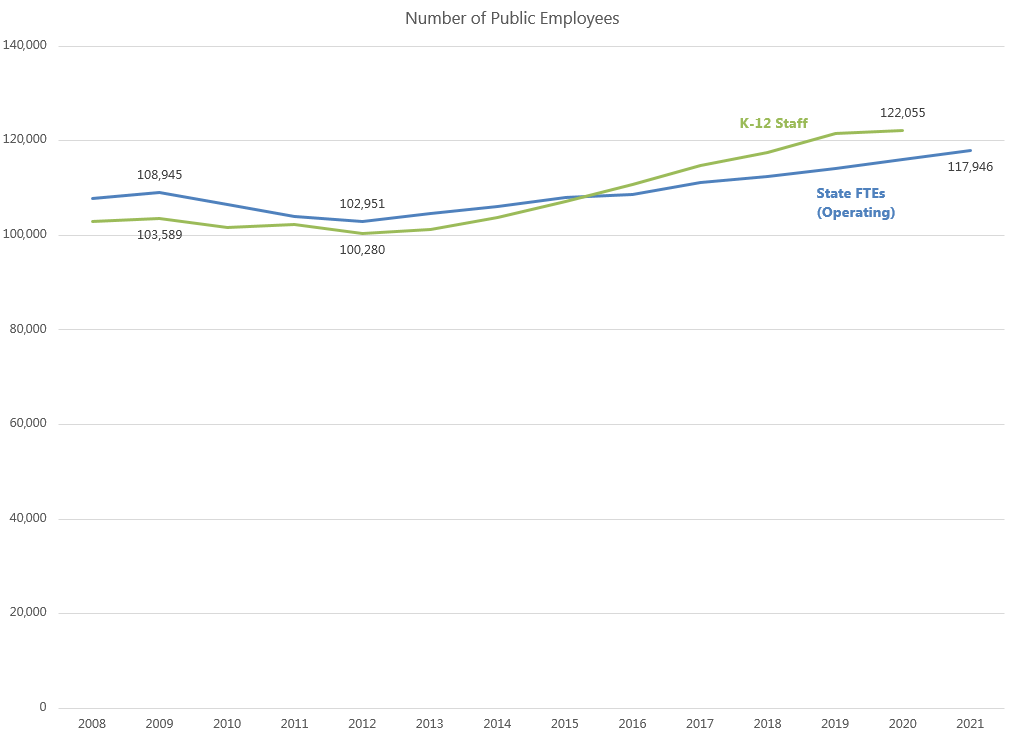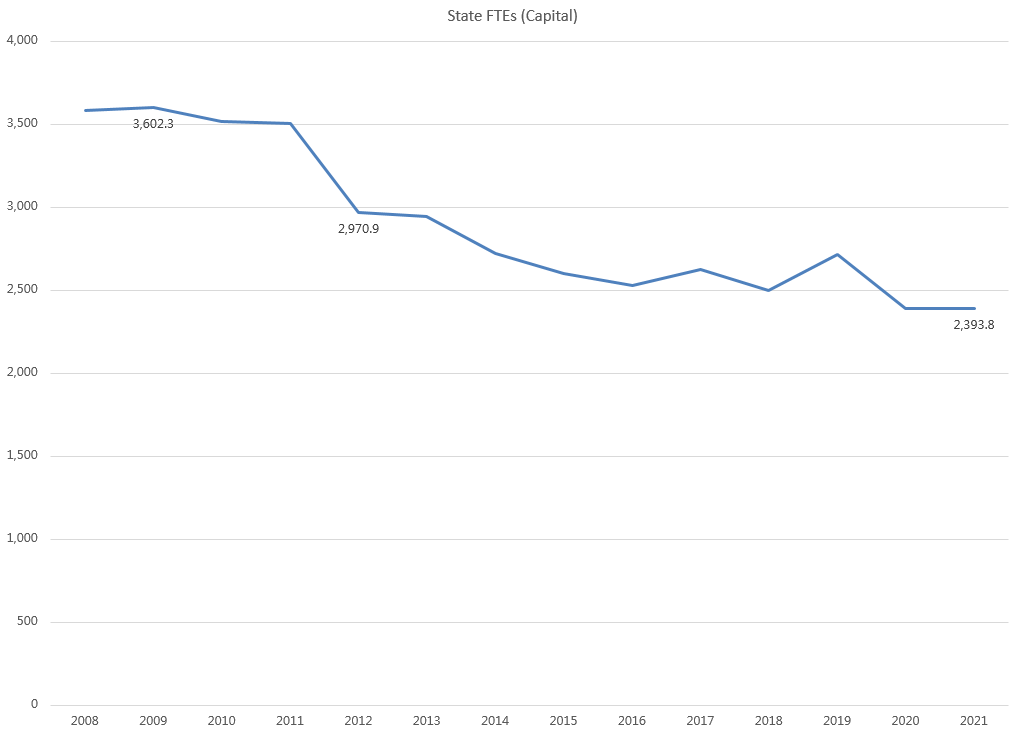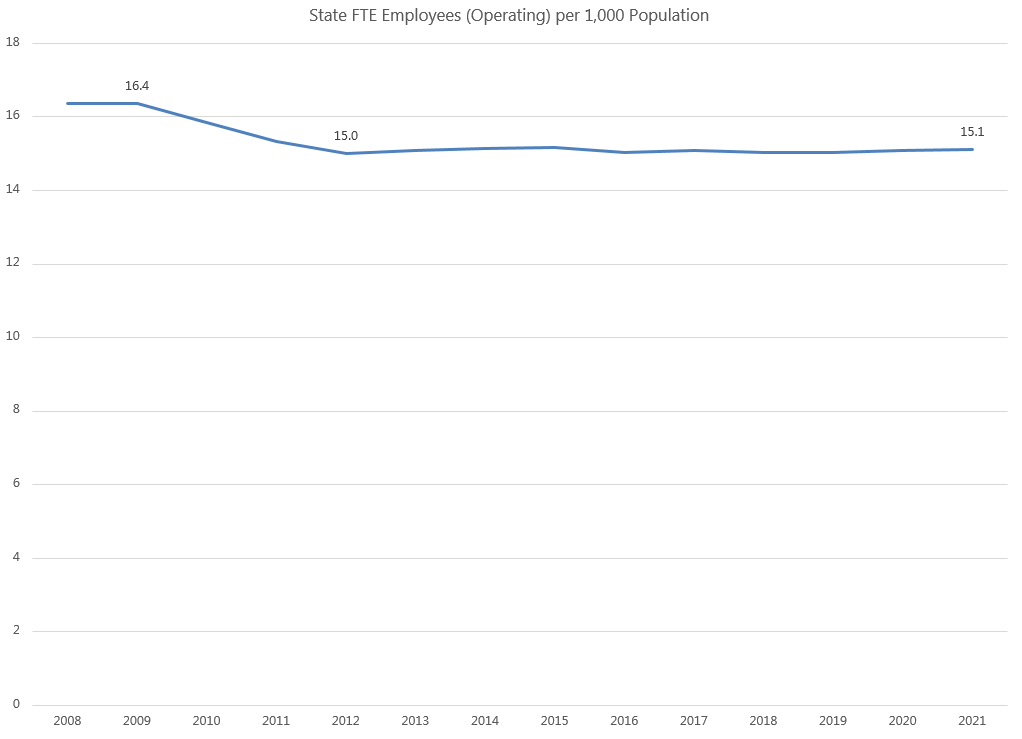2:21 pm
May 29, 2020
During the Great Recession, the state negotiated pay cuts for state employees. Additionally, state and K–12 employees lost jobs. Post-recession, the number of both K–12 employees and state employees funded by the operating budget rebounded. On a per capita basis, the numbers of state employees funded by the operating and capital budgets have not recovered. But K–12 employment is up in the post-recession period even when considered on a per-pupil basis.
The pre-recession high point in state government employment was in FY 2009, when state employees funded by the operating budget totaled 108,945 and employees funded by the capital budget totaled 3,602. The low point was in FY 2012. Over this period, employment funded by the operating budget was reduced by 5.5 percent and employment funded by the capital budget was reduced by 17.5 percent.
Similarly, for K–12 employees, the pre-recession high point was SY 2008–09 (when employment totaled 103,589) and the low point was SY 2011–12. Employment dropped 3.2 percent over this period.
Over the same period (from 2009 to 2012), state operating employment per capita dropped 8.3 percent and state capital employment per capita dropped 20.0 percent. Employment of K–12 staff per pupil dropped 4.9 percent.
Except for capital-budget-funded staff, employment has increased since 2012.
From the high point in 2009 to 2021, the number of state operating employees grew by 8.3 percent. When considered per capita, the number is down 7.7 percent. (For capital budget employees, these figures are, respectively, -33.5 percent and -43.3 percent.)
The number of K–12 employees grew 17.8 percent from 2008–09 to 2019–20. As a share of enrollment, the number of K–12 employees grew 4.6 percent over that period.
Previous posts in this series:
- Looking back at state budgeting in the Great Recession, part 1: Revenue losses
- Looking back at state budgeting in the Great Recession, part 2: How the governor and Legislature responded
- Looking back at state budgeting in the Great Recession, part 3: New Resources
- Looking back at state budgeting in the Great Recession, part 4: Overview of spending cuts
- Looking back at state budgeting in the Great Recession, part 5: Detailing the policy cuts




